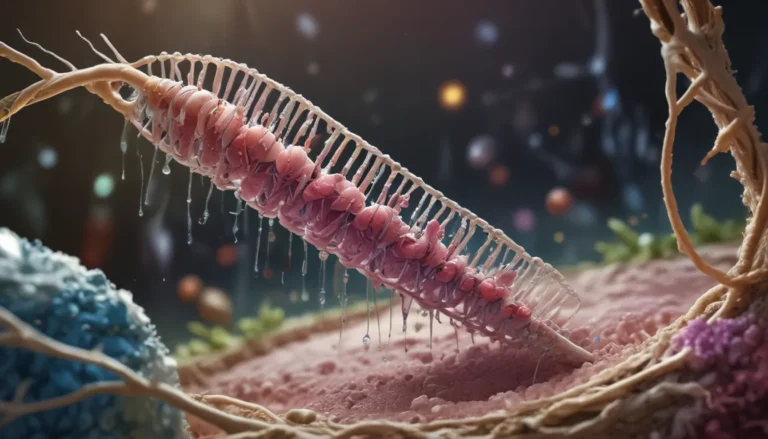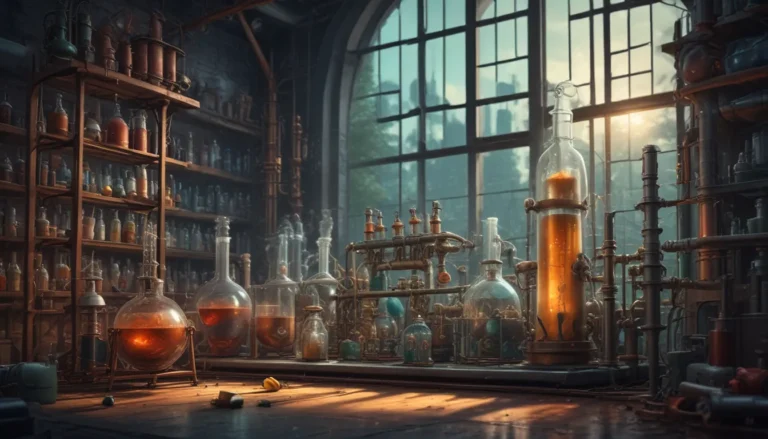A Note About Images: The images used in our articles are for illustration purposes only and may not exactly match the content. They are meant to engage readers, but the text should be relied upon for accurate information.
Welcome to the fascinating realm of non-stoichiometric defects, where atomic imperfections and deviations from ideal ratios lead to unique properties and behaviors in materials. In this article, we will uncover 18 astonishing facts about non-stoichiometric defects, exploring their impact on material properties, their role in various scientific fields, and their exciting applications in technology.
Unraveling the Definition of Non-Stoichiometric Defects
Non-stoichiometric defects refer to the presence of atoms or ions in a crystal lattice that deviate from the ideal stoichiometry of a compound. These deviations create imbalances in the ratio of elements, resulting in intriguing properties and behaviors that set these materials apart.
Discovering the Types of Non-Stoichiometric Defects
There are several types of non-stoichiometric defects, including vacancies, interstitials, substitutional defects, and Frenkel and Schottky defects. Each type contributes to the overall non-stoichiometry of the crystal structure, shaping the material’s unique characteristics.
Uncovering the Influence on Physical Properties
The presence of non-stoichiometric defects can significantly impact the physical properties of a material. Changes in electrical conductivity, magnetic behavior, and optical properties highlight the importance of these defects in materials science and engineering.
- Non-stoichiometric defects can alter electrical conductivity, magnetic behavior, and optical properties, leading to the creation of new materials with unique abilities.
- Scientists are exploring non-stoichiometric defects to develop advanced materials for energy storage, catalysis, and solar cells, paving the way for exciting technological advancements.
Exploring the Role in Solid-State Reactions
Non-stoichiometric defects play a crucial role in solid-state reactions, facilitating diffusion processes and aiding in the formation of new compounds through reactions such as redox reactions and phase transformations.
Diving into Applications in Energy Storage and Catalysis
Non-stoichiometric defects are of great interest in the field of energy storage, enhancing the performance of batteries, fuel cells, and supercapacitors by improving ion transport and storage capabilities. Additionally, these defects significantly impact the catalytic activity of materials, promoting various chemical reactions through active sites on the surface.
Understanding the Formation and Role in Crystal Growth
Non-stoichiometric defects can form during the crystal growth process, influenced by factors such as temperature, pressure, and impurities. These defects contribute to the creation of unique crystal structures and play a significant role in crystallographic phase transitions, inducing structural changes and altering stability and symmetry.
Examining the Effect on Mechanical Properties
The influence of non-stoichiometric defects on the mechanical properties of materials cannot be overlooked. These defects can affect hardness, tensile strength, and fracture toughness, making them essential considerations in engineering and materials design.
- Non-stoichiometric defects influence the mechanical properties of materials, impacting hardness, tensile strength, and fracture toughness.
- The relationship between non-stoichiometric defects and point defects in crystals leads to complex defect structures, influencing overall material properties.
Unveiling Occurrence in Minerals, Oxides, and Photovoltaic Devices
Non-stoichiometric defects are commonly observed in minerals and oxides, occurring naturally or introduced intentionally through processes like doping or annealing. In the realm of photovoltaic devices, these defects play a crucial role in influencing charge carrier recombination, energy levels, and light absorption properties, thereby affecting the efficiency of solar cells.
Investigating Effects on Thermal Conductivity and Electronic Band Structure
Non-stoichiometric defects can have a significant impact on the thermal conductivity of materials, scattering phonons and impeding heat transfer. Additionally, these defects can modify the electronic band structure of materials, creating energy levels within the bandgap and leading to altered electronic properties.
Progress in Research and Future Prospects
Extensive research is ongoing in the field of non-stoichiometric defects, focusing on the mechanisms, characterization techniques, and applications of these defects to develop advanced materials with tailored properties. The future holds great promise for advancements in materials science and technology through further understanding and control of these defects, paving the way for novel materials with enhanced properties across various applications.
Embracing the World of Non-Stoichiometric Defects
In conclusion, non-stoichiometric defects offer a captivating glimpse into the intricate world of materials science and technology. Their unique properties and behaviors, stemming from deviations in atomic ratios, present exciting opportunities for scientific exploration and technological advancements. By delving into the nature and effects of non-stoichiometric defects, researchers can unlock new possibilities for designing materials with tailored properties and improving existing technologies in diverse industries.
Advancing Knowledge with FAQs
- What is a non-stoichiometric defect? A non-stoichiometric defect refers to a deviation from the ideal atomic ratios in a compound, resulting in an imbalance between the number of atoms of different elements.
- What causes non-stoichiometric defects? Non-stoichiometric defects can arise from factors like impurities, vacancies, interstitials, or substitutions in a crystal lattice, disrupting the ideal atomic arrangement.
- What are the effects of non-stoichiometric defects? Non-stoichiometric defects can lead to changes in electrical conductivity, optical properties, mechanical strength, and chemical reactivity of materials.
- What are some applications of non-stoichiometric defects? Non-stoichiometric defects find applications in electronics, energy storage, catalysis, and biomaterials, harnessing their unique properties for enhanced performance.
- How are non-stoichiometric defects studied? Techniques such as X-ray diffraction, electron microscopy, spectroscopy, and computational modeling are used to study the structure, composition, and properties of materials at the atomic level.
Explore the possibilities of non-stoichiometric defects and delve into a world where atomic imperfections pave the way for innovative materials and technological breakthroughs. Join us on this journey of discovery, where science, engineering, and creativity converge to shape a brighter future through the intricate interplay of atomic arrangements and defect structures.





